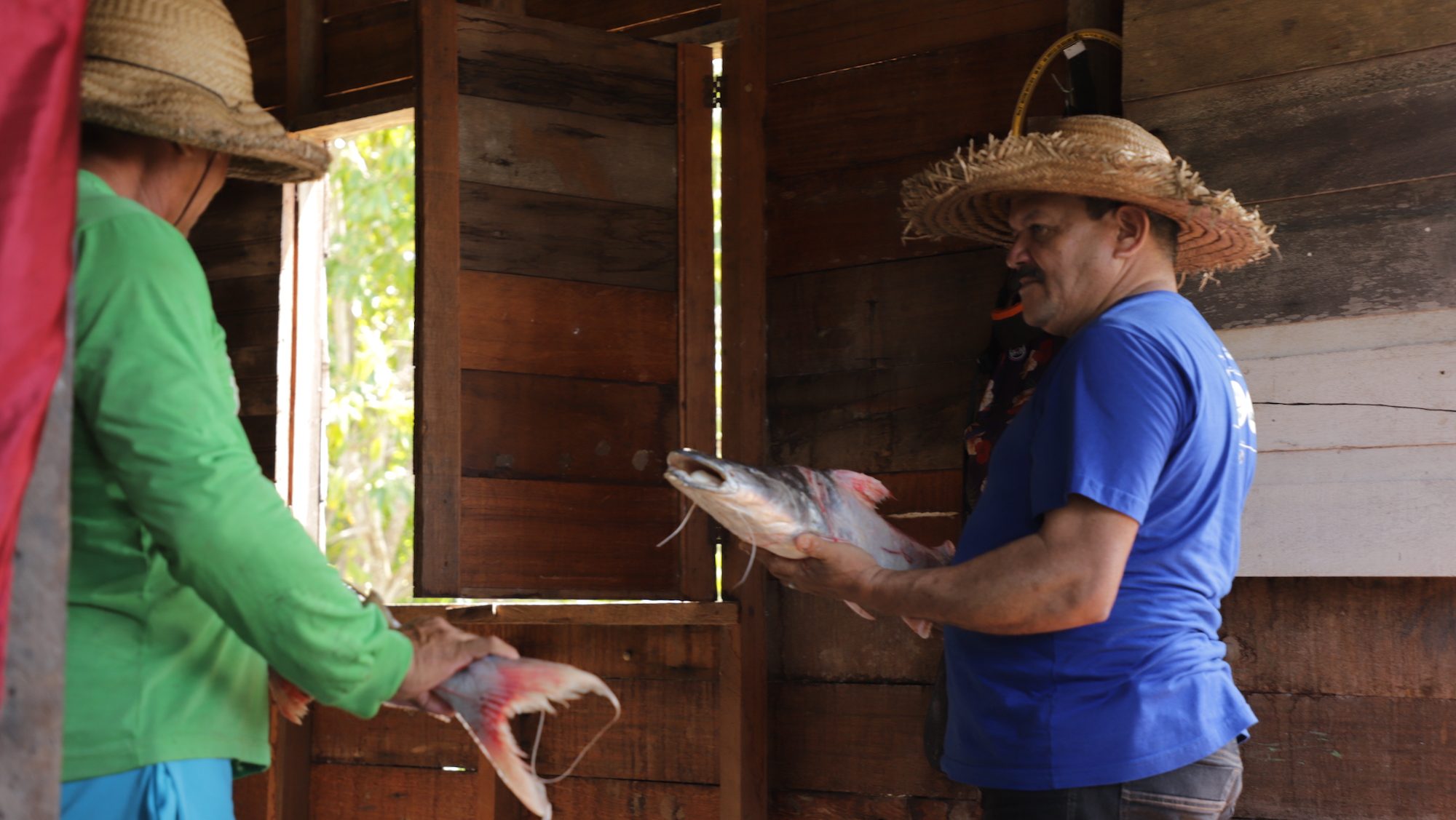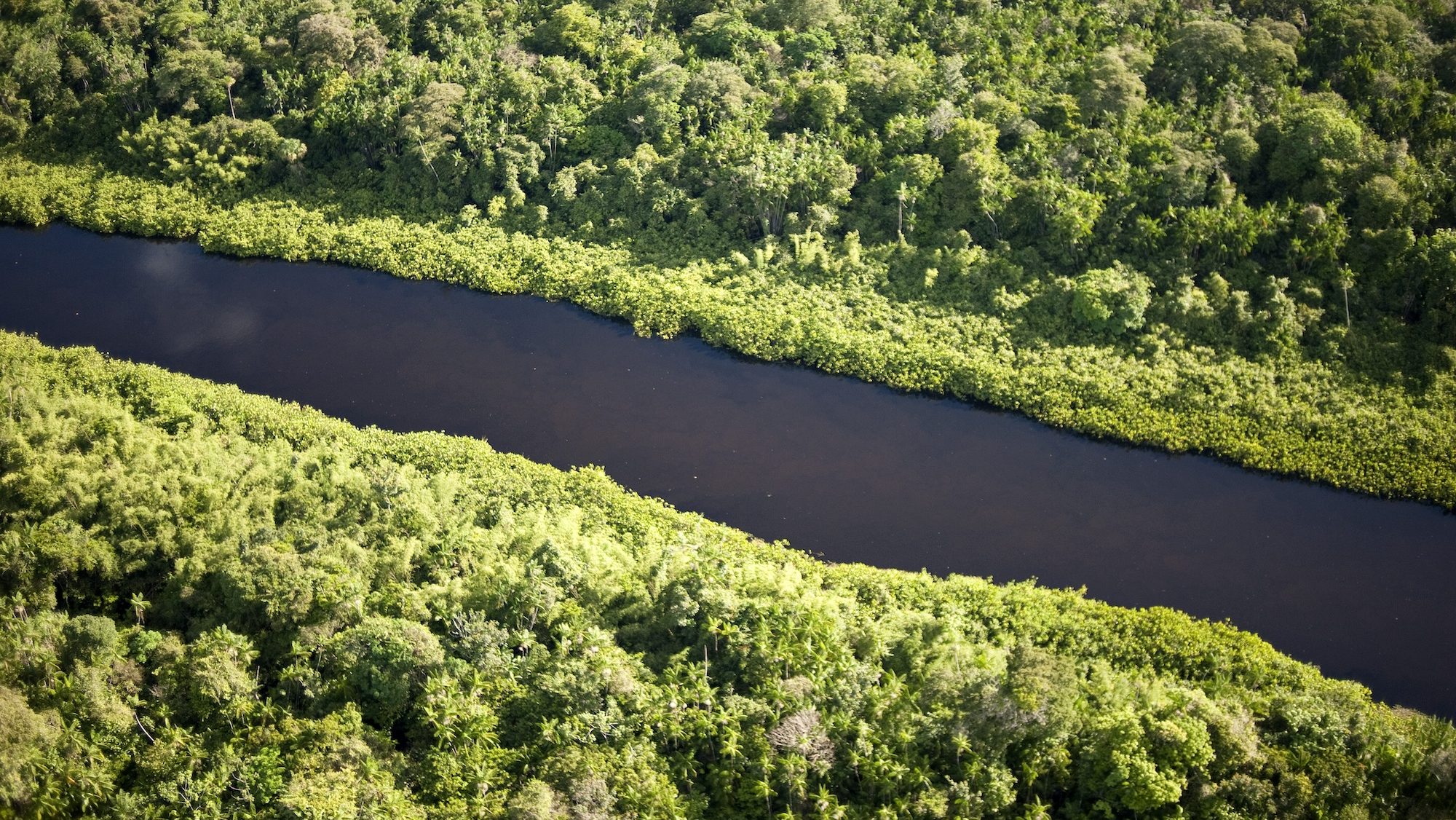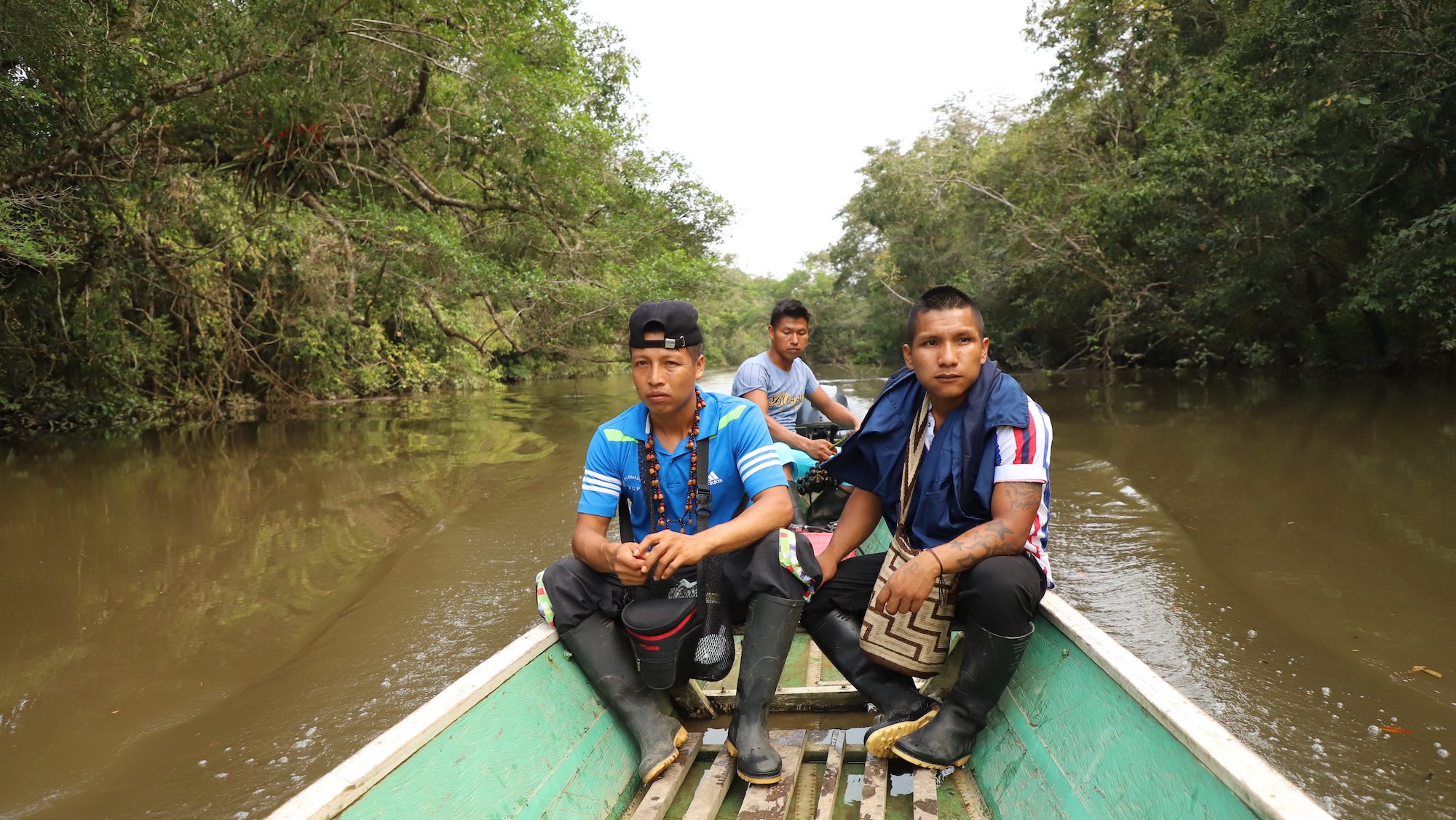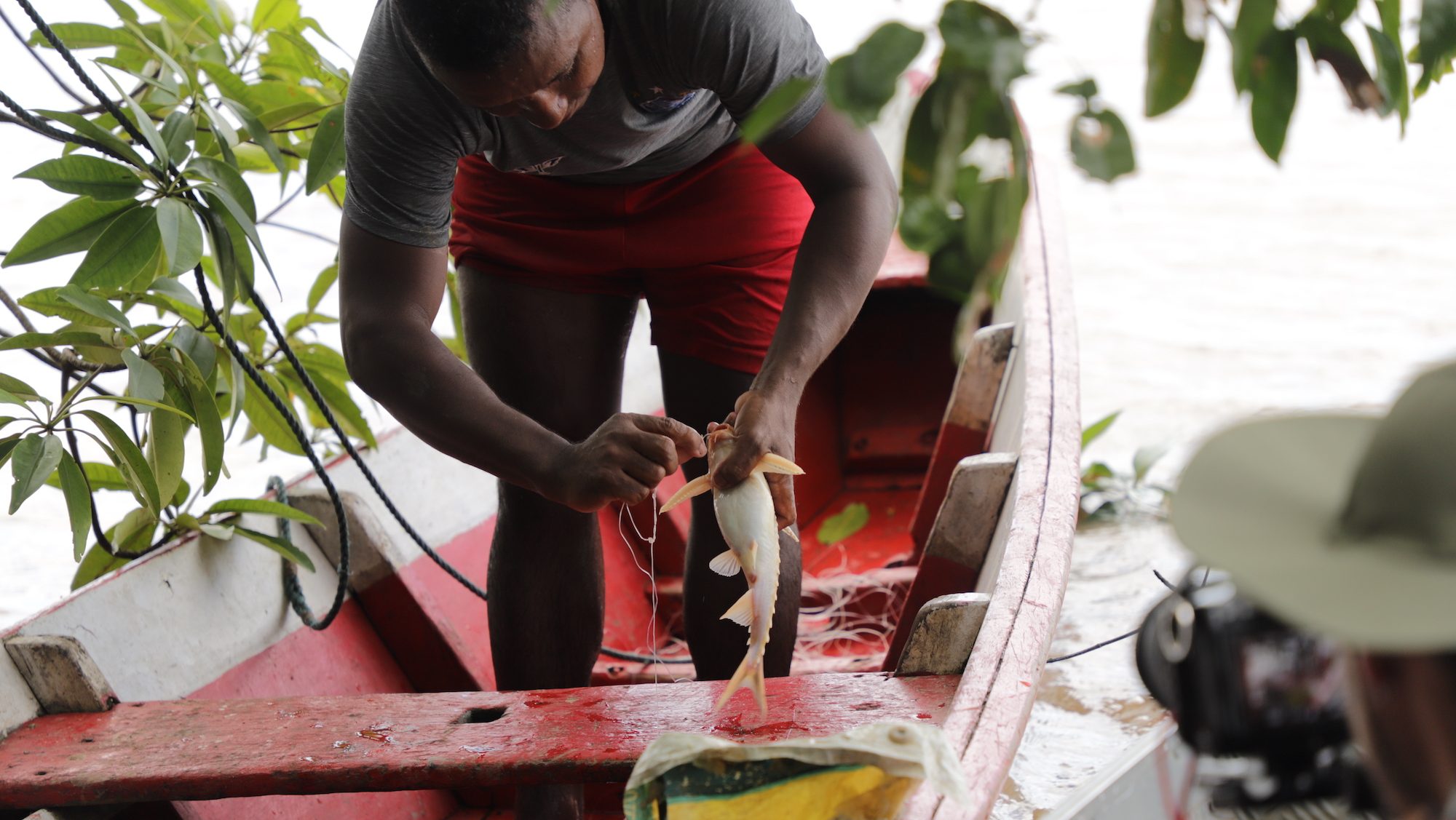At first, Paulo Petry’s idea gives me pause. I realized that what we need, he is saying, is a panda for the Amazon.
But Petry, senior freshwater scientist for The Nature Conservancy’s Latin America Region, isn’t talking about literal pandas. He’s making a point about the fauna of the Amazon River. Most conservationists recognize the Amazon as a hotspot of biodiversity, but the focus is generally on forest systems. But when asked to name freshwater charismatic species, many nature lovers will falter. There are not elephants or polar bears. For those living outside the Amazonian region, there isn’t even an iconic fish like, say, salmon.
But, in reality, there are fishes in the Amazon that undertake migrations that make salmon migrations look like a lap at the swimming pool.
One of those fishes is the dorado catfish, a fish that can reach the size of 4 feet, which undertakes what is likely the longest freshwater fish migration on the planet, that feeds communities and features in myth.
Petry is on a mission to understand the complicated life history of the dorado catfish, and to use that information to influence conservation in the Amazon River and its tributaries. Part of that effort is sharing the story of this remarkable fish. The video featured in this blog is one part of that project.
Let’s take a look at the dorado and its importance.

Catfish Planet
If you’ve ever cast a line, almost anywhere on the planet, you’re likely familiar with catfishes. For U.S. anglers, various catfish species are common catches in farm ponds, rivers and reservoirs. But there’s a whole world of catfishes beyond the channel cat that ate your worm.
You could say, in fact, that Earth is a planet of catfishes. They are found on every continent except Antarctica. Freshwater fish authority Zeb Hogan notes that one in 20 vertebrates species is a catfish. There are catfish that engulf pigeons on the outskirts of Paris. There are catfish that live above 15,000 feet in the Andes and blind catfish that live deep in caves. Some species are important for dispersing fruit seeds. Others are highly carnivorous, true keystone predators. And they’re associated with some of the largest river systems, the Missisippi and the Mekong and the Congo. And the Amazon.

The Amazon is particularly rich in catfishes, with at least 1,200 species, and several new ones being described each year.
“They range in size from ¾ of an inch to more than 7 feet,” says Petry. “They use every single habitat you can imagine. They live in big river channels and flooded forest. They burrow in sandy river bottoms. They live in logs. They’re everywhere.”
There are 6 species in the Amazon labeled as “goliath catfishes,” apex predators that reach significant size. The dorado is one of those, one of the species capable of reaching a length of 4 feet or more.
“I really admire these fish,” says Petry. “They have a complex life cycle. They taste damn good. They are an iconic animal in this river system.”
They also undertake an epic migration, a journey that feeds ecosystems and people alike. That migration also puts them at risk as the Amazon Basin is developed for hydropower, since they depend on open free-flowing rivers.

The Great Fish Migration
It has long been known that dorado catfish undertake lengthy migrations from headwaters to the Amazon estuary. But mapping such a migration scientifically was a difficult task.
In the 1970s, there were attempts to tag fish and track them through recaptures, a common tactic in fisheries science. But in such an extensive system, a lot of fish need to be tracked to get adequate recapture data. In this case, the estimate was that 100,000 fish would need to be tagged – more than feasible for a scientific study.
Advances in biological monitoring technology was a game changer. Petry spearheaded a project, in collaboration the Wildlife Conservation Society and local research institutions, to focus on environmental DNA (or eDNA), the DNA an organism leaves behind in the water through feces, skin or other biological matter.
Research efforts found that dorado catfish could migrate distances as long as 6,500 miles, longer than any other fish ever recorded. The fish were born in headwaters on the Andean piedmont, then migrated as larvae down the Amazon all the way to where the great river meets the sea. As adults, they return to spawn.
Not only do these apex predators profoundly shape the ecosystem, they also are essential to Amazonian communities.
“These fish are hugely important to communities all along their migration,” says Petry. “Part of our goal for the short film was to show how communities rely on the dorado.”
Petry emphasizes that there is still much to learn about the dorado and its migration. Researchers still don’t know the homing mechanism that the catfish use to find their natal waters. They need to know about population structure and dynamics.
And this isn’t merely to answer an interesting natural history question. It will help conservationists better protect the dorado – and the people and ecosystems that rely on it.

A System Transformed
The Amazon Basin is currently seeing a boom in hydropower development. The constructed dams will potentially disrupt the migrations of dorado and other fish, changing an entire ecosystem.
“Whenever you put in an impoundment on a river, there’s a whole transformation of the system,” says Petry.
The Nature Conservancy and other organizations are looking at ways to meet energy needs while also protecting fish migrations, ecosystems and the communities that rely on them. This includes an approach called “hydropower by design,” basically siting dams where they have least ecological and cultural impact.
That’s where the data on dorado migration and life history comes into play. By knowing the migration routes, where fish spawn and what habitat they need during all phases of their lives, conservationists can shift hydropower to areas where there will be fewer negative impacts.
“With current building of dams, we are losing some fish stocks before we even understand them,” says Petry. “We’re losing evolutionary diversity. We need to dedicate the time and effort to understanding these fish so that we can minimize these impacts.”
Petry believes research can guide a better future. “To me the endgame is to create solutions where we guarantee the viability of populations of these fish,” he says.
The dorado is just one species in a basin with more than a large, diverse, complex ecosystem. The Amazon is home to more than 2,700 known fish species alone. But researching the species – and protecting its migration – holds bigger benefits than for just one creature.
“We are focusing on this catfish,” says Petry. “The catfish doesn’t exist in a vacuum. They exist in context with many other species. If they survive, the other species survive as well.”



The focus on any kind of power to replace oil and gas runs into this kind of environmental and ecological problem. Putting up dams that will eliminate even the least of the catfish populations while eliminating dams that have diminished wild salmon for decades is a head-scratcher. Humans must instead diminish or eliminate their ravenous hunger for energy usage of all kinds.